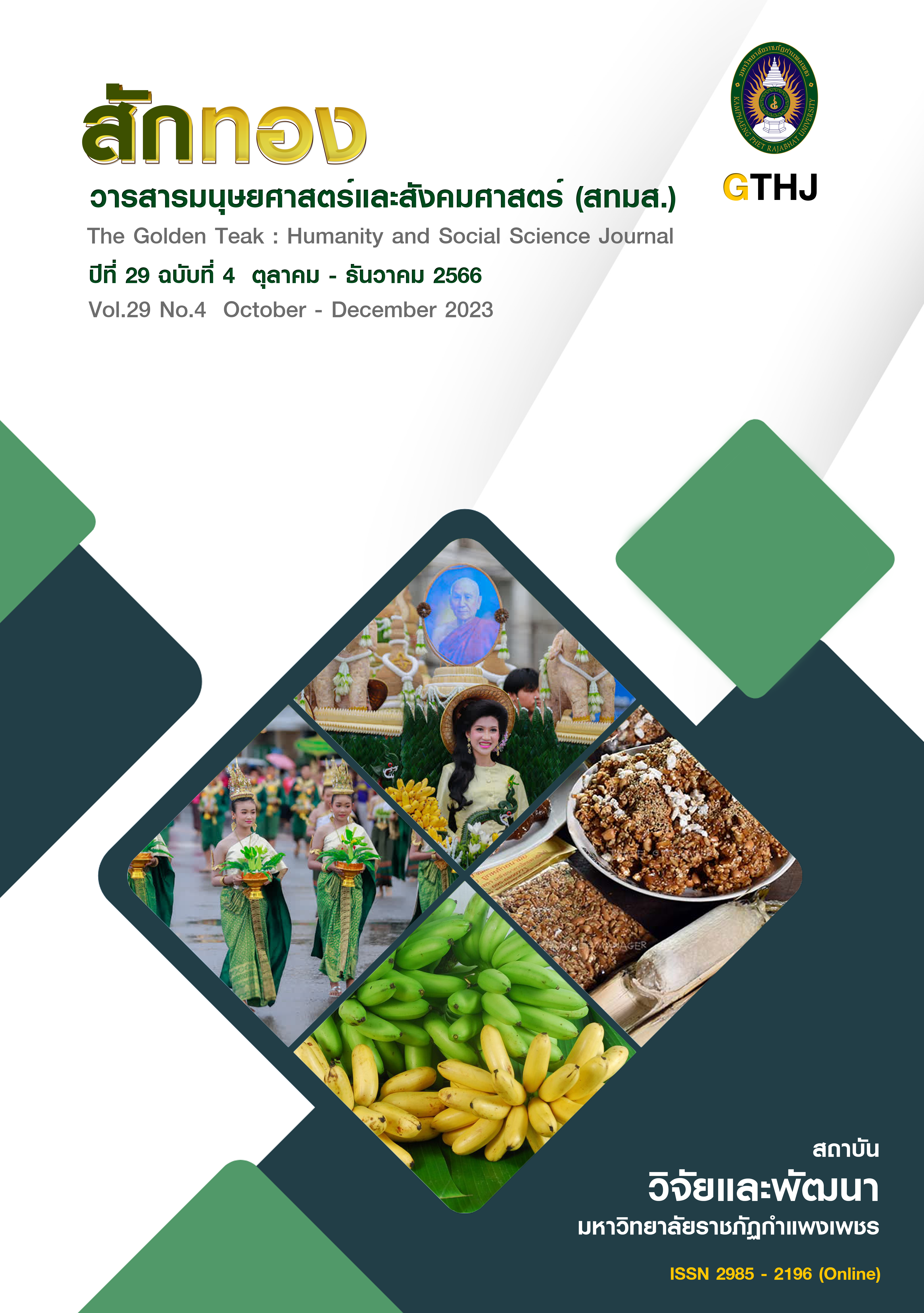Cantonese Lion Dance: Creativities of Paintings as Symbolic Representations of Paknampo God and Goddess
Main Article Content
Abstract
The objectives of this research were: 1) to study the history of Cantonese lion dance and Paknampo God and Goddess 2) to investigate the symbols that represented Paknampo God and Godess 3) to create the paintings as symbolic representations of Paknampo God and Godess. This research was divided in two parts. The first part of this study consisted of analyzing documents and collecting data from fieldwork in order to find symbolic representations of Paknampo God and Godess. The second part comprised of creating paintings. The results showed the important factors gained from analyzing symbolic representations of Pak Nampo God and Goddess which comprised of history, belief and faith, Chinese holy symbolic representations, and related objects. The data analysis involved the use of semiology theories to investigate the symbols and their meanings. The results gained from this study led to the analysis and synthesis of symbols which were used as guidelines for creating painting sketches. All sketches were organized beautifully with a new element by using the principle of visual arts. Each painting was sketched out two to three paintings. The sketches were sent to evaluate by experts. The experts selected the appropriate sketches that presented as symbolic representations of Paknampo God and Goddess. The selected paintings were used as models in creating eight oil paintings.
Article Details

This work is licensed under a Creative Commons Attribution-NonCommercial-NoDerivatives 4.0 International License.
บทความที่ได้รับการตีพิมพ์เป็นลิขสิทธิ์ของวารสาร สักทอง : วารสารมนุษยศาสตร์และสังคมศาสตร์ สถาบันวิจัยและพัฒนา มหาวิทยาลับราชภัฏกำแพงเพชร
ข้อคิดเห็นใดๆ ที่ปรากฎในวารสารเป็นวรรณกรรมของผู้เขียนโดยเฉพาะ ซึ่งมหาวิทยาลัยราชภัฏกำแพงเพชรและบรรณาธิการไม่จำเป็นต้องเห็นด้วย
References
Buaclee. C. (2013, January-June). Signs Thai Appear in Communication Design and the Reflection of Post Modern Culture. Veridian E-Journal, 6(4), 134-147.
Chantharawongphaisan, P. (2009). 108 chinese symbol.. Bangkok : Se-Education. [In Thai]
Chio, S. (2019). Chinese Gods. Bangkok : Gypzy Publishing. . [In Thai]
Hemachatviroon, N. (2021). Lion dance Kwang Siu in Nakhon Sawan. [Online]. Available : https://www.youtube.com/watch?v=kYSUAaXtkmk. [2021, August 17].
Konphichic. (2017). Shrine of the Tap Tim Goddess. [Online]. Available : http://oknation.nationtv.tv/blog/ Konpichit/ 2007/12/25/entry-1/comment [2021, October 26].
Niroj. P. (2012). Tell about Chinese New Year Pak Nam Pho. Nakhon Sawan : N.P. [In Thai]
Palprem. T. (2017, September-December). Nature of Art. Silpakorn University Journal, 37(3), 143-158. [In Thai]
Promsuwan, S. (2003). Art Appreciation. Bangkok : Bookbinding. [In Thai]
Saengthong, S. (2016). “100 Years of Pak Nam Pho” Tradition and Rituals of Chinese in Pak Nam Pho. Nakhon Sawan : Nakhon Sawan Art and Cultural Office. [In Thai]
Khundiloknattawasa, S. (2018, January-June). Power of Faith and Belief on the Tradition of Pak Nam Pho Shrine: The Golden Dragon. Humanities and Social Sciences Journal of Graduate, Pibulsongkram Rajabhat University, 12(1), 82-96. [In Thai]
The Encyclopedia of Central Thai Culture, Volume 1. (2012). The Encyclopedia of Central Thai Culture, Volume 1. Bangkok : Thai Cultural Encyclopedia Foundation. [In Thai]
Watcharapradit, R. (2017, January 10). Cai Shen Ye, God of fortune. Khaosod, p.23. [In Thai]


